Media | Articles
The XJ was the perfect Jaguar at the perfect time
Rationalization was the name of the game in the British car industry during the 1960s. It had already seen the huge BMC (British Motor Corporation) merge with Jaguar in 1966, and then Jaguar boss William Lyons was faced with slimming down a range of four separate sedans into a single model. This is where the XJ came into the equation and became the backbone of the sporting luxury firm.
Plans for the XJ were already afoot in the early 1960s. Lyons, ever the astute businessman, knew it made more sense to have a single model that served multiple purposes. He was also a dab hand at using as many parts as possible across the whole spread of Jaguar models, so the E-Type benefitted from a new dash as development of the XJ continued. The E-Type also served as a test bed for the company’s V-12 engine, which would land in the XJ in 1972.
The XJ6 arrived in 1968 and replaced the 240/340, S-Type, and 420 in a single swoop. The vast 420G sedan lingered in the sales charts until 1970, but few bought this model when there was a long-wheelbase XJ6L on offer with four more inches of rear legroom than the standard XJ6. Inside, the XJ had all the wood and leather expected of a Jaguar, and customers could add luxuries such as air conditioning, electric windows, and Sundym glass (which was standard on the most opulent Vanden Plas version).
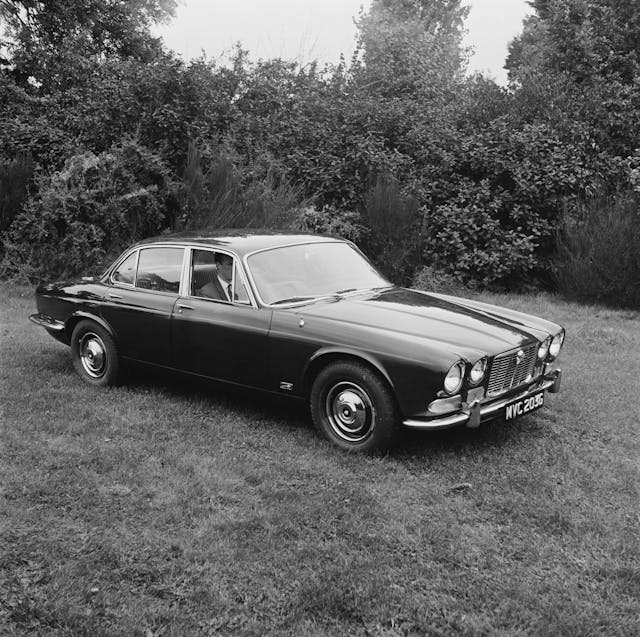
Power for the XJ6 was another of Lyons’ cost-conscious decisions, as he stuck with the XK straight-six engines, even though the V-12 was in the pipeline and he could have opted for the V-8 engines that came as part and parcel of Jaguar’s acquisition of Daimler. However, the smallest 2.4-liter XK engine was passed over in favor of a 2.8-liter version as the entry point to the XJ range. It was aimed at tax-wary company drivers, but its 140 hp was enough to take the XJ from rest to 60 mph in a decent 11 seconds and on to 117 mph. It was the 180 hp 4.2-liter engine, however, that made the XJ the prestige express it was meant, with 0–60 mph coming in 8.8 seconds and a top speed of 124 mph. When the 5.3-liter V-12 arrived in 1972, it provided 253 hp for 140 mph and 0–60 in 7.4 seconds, making the XJ the fastest four-seat sedan in the world.

In 1973, Jaguar updated the XJ6 as the Series 2, with a slimmer grille and revised dash. Two years after this, a 3.4-liter six arrived as the entry-level engine and Jaguar added a two-door coupe to the lineup as the XJ12C, with 4.2-liter versions of the coupe also offered. For the U.K. market, the six-cylinder engines resolutely stuck with carburetors, even though U.S.-spec cars gained fuel injection. Jag did give the V-12 injection, though, which boosted power to 285 hp, even if fuel economy remained at a sobering 13.2 mpg. The only other significant change for the S2 was a 1977 swap from the BorgWarner three-speed automatic gearbox to a GM400.
The Series 3 XJ came on stream in 1979 with a higher roofline but overall sleeker looks. This restyle was by Pininfarina and the first time a Jaguar had been shaped outside of the factory gates. Flush door handles, impact-absorbing bumpers, updated interior, and revised lights all gave the XJ a new lease on life that would see the XJ12 last all the way until 1992, with power up to 295 hp. The 3.4- and 4.2-liter models lasted until 1987, when the new XJ40 generation was launched, and by then Jaguar’s rational approach had paid off handsomely, with almost three quarters of a million Series 1/2/3 XJs produced.
What’s an XJ like to drive?
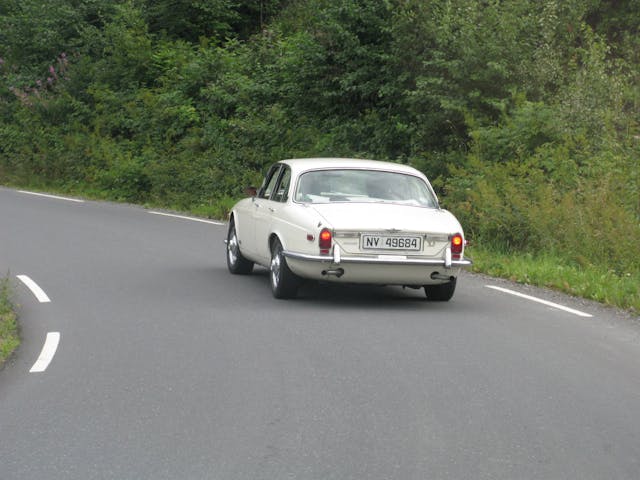
At its launch in 1968, the XJ6 was hailed as the best car in the world, which certainly upset Rolls-Royce when the upstart XJ cost a third of what you’d pay for a Silver Shadow. The reason for the XJ’s rapturous welcome was not down to its supreme value, but because it really was brilliant. It covered uneven ground in a way that left its occupants unaware of how poor the surface was, and noise was filtered out thanks to the use of subframes that isolated the cabin from exterior interference. There was also plenty of insulation to ensure the lusty XK and then V-12 engines remained but a distant whirr, even when being worked hard.
Today, the XJ still ranks as one of the most refined ways to travel, though you will notice a bit of wind noise around the front pillars compared to modern luxury cars. However, the fact this range of XJs bears comparison with far newer machinery speaks volumes about how good it was when new. So long as the Jaguar’s suspension and subframe bushes are all in good condition, it will be a delight all the way up to autobahn pace.
You’ll also find a good XJ handles very well, though the steering is generously assisted and doesn’t offer a huge amount of feedback. This is far from a deal breaker in a luxury sedan and, next to a Rolls-Royce Silver Shadow, the XJ feels positively compact and nimble. Strong disc brakes all around help the Jag stop well, while the three-speed automatic gearbox should be smooth. There are more manual-transmission cars around than you’d imagine, as autos were not the default choice for many buyers in the 1970s, and they make for a very capable sporting sedan. If you find a manual XJ with the optional overdrive fitted, it is also a great high-speed cruiser.
If your wallet can bear the strain of fueling the 5.3-liter V-12, it’s a beguiling choice in the XJ. Peerlessly smooth, effortlessly powerful, and elegantly refined, the V-12 propels the Jag with ease and calm. This isn’t to say the six-cylinder cars are gruff—they most definitely are not, and a 4.2-liter XJ will keep pace with the V-12 in most situations.

No matter which engine you decide on, the XJ’s cabin is one of the best to spend time in. The mix of materials and ambience are very 1960s, even in the later S3s, but with more comfort. Rear legroom in the shorter wheelbase models can be a consideration if you’re going four-up with adults in all seats, but the long wheelbase addresses this issue admirably. There’s also a big, albeit shallow, boot, so longer trips are one of the XJ’s fortés.
How much does an XJ cost?
Buying a Series 1, 2, or 3 Jaguar XJ need not break the bank, as you can still find running and driving six-cylinder sedans from around the $5000 mark. The Series 1 cars are the rarest at this point and the most valuable when in good condition. The Series 2 cars are more numerous but are the least valuable of the three series. The Series 3 is the most common but increasingly gaining in value, with a condition 1 (Concours) average value of $39,400.
The greatest variation is in the values of the Series 2 cars. Figure around $9000 for a Series 2 six-cylinder sedan, while the six-cylinder coupes are more desirable and valued at $19,200 in good condition. Among the 12-cylinder S2 cars, a sedan in good condition is about $12,000, and the V-12 coupe is $24,600 in good condition.
Moving on to the Series 3, the car is more than twice as numerous on Hagerty policies as the Series 2, despite the absence of a coupe. Also, the V-12 was not officially imported into the U.S., but some are being brought in from Canada and other countries. Recently, exceptional S3 XJ6s have sold well, and price guide values are up nearly 60 percent in the past three years. The condition 1 value for a 1987 XJ6 Vanden Plas is now $40,500, although that value is a couple thousand below where it was a year ago.
Many XJs have been converted to a GM V-8 engine by now. While this conversion has many benefits, the everyday usability that is gained by the conversion puts a brake on its potential appreciation as a collector car. Occasionally, cars are also converted to manual transmissions. However, they should not be confused with the rare factory-built manual transmission cars. Make sure you know what you are getting.
What goes wrong and what should you look for when buying an XJ?
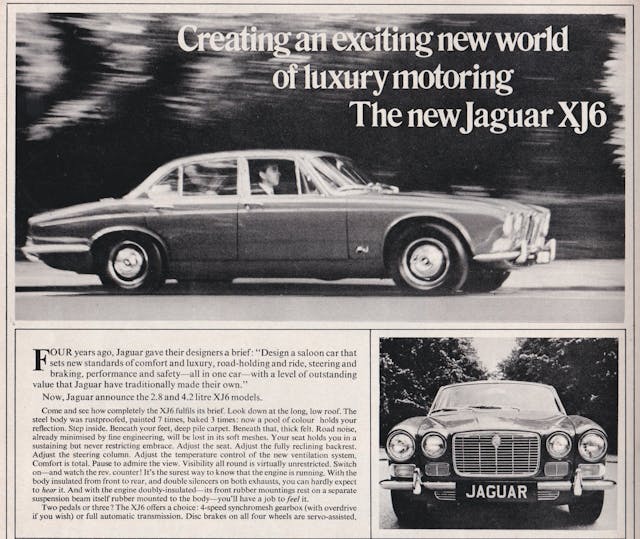
Regardless of what year XJ you are thinking of buying, body condition is the number one consideration. These are large, complex cars that can be fiendishly expensive to restore if rust has taken hold. You can get a lot of panels to replace crusty ones, but they can be costly, so a rotten car can quickly become a financial rabbit hole.
All of the usual rot spots are where you need to check with the XJ. This means getting on your hands and knees to inspect the inner and outer sills and their closing panels, front and rear valances, floor pans, chassis rails, door bottoms, wheel arches, bumpers and supports, and fuel tanks. You’ll also need to check the front fenders around the headlamp surrounds, the hood and its hinges, door pillars, sunroof edges, and the crossmember beneath the radiator in the engine bay. When all that’s done, you still need to have a look at the trunk lid and spare wheel well for any signs of corrosion, and around the windshield and rear glass. Rot in the subframes and rear suspension radius arms will need the car on an lift, so it’s worth putting in the effort.
The complex independent rear suspension is expensive to rebuild properly, and it comes with in-board rear disc brakes. Any knocks or feeling of looseness at the rear points to wear, so budget for all new rubber bushings. The same applies to any vague sensation from the front suspension and steering.
The good news is that the engines and transmissions are robust. XK straight-six engines use a little oil in normal use, so don’t fret about that. However, make sure the timing chain is not rattling. Also check the engine has had regular oil and coolant changes with the correct fluids, as this motor can become clogged up and result in overheating and blown head gaskets.
The V-12 lasts very well, but the timing chain, oil, and coolant need to be checked just as with the XK. Any oil leak from the V-12 is most likely from the rear main seal, and this is a common issue on the XK motor, too.
Poor gear shifts with the automatic gearboxes are most likely due to them needing a fluid change, or the transmission mount’s rubber bushing has perished. Replacing both of these items should quickly restore the XJ’s smoothness.
With so much wood and leather inside an XJ’s cabin, it pays dividends to find a car with a well-cared-for cabin. Leather can be treated and re-colored at home if it’s not badly cracked or split, but wood veneers generally need the attention of a professional to restore their luster. When checking the interior, make sure all of the electrics work, and the air conditioning, too, if fitted.
Which is the right XJ for you?

The three series of Jaguar XJ each have their own distinct looks and, consequently, their own fans. Which appeals to you is down to taste. However, for those less fussed about this, the S3 offers the most opulent cabin, better build quality when new, and more efficient engines. The S3 is also the most numerous XJ of this group, making it more affordable and easier to find.
The Series 2 XJ was the unloved sibling for a long time, overlooked for its associations with the strife of the Leyland period of ownership in the 1970s. Now, it’s coming into its own, helped along by the enthusiasm for the coupe version based on the S2. For some, though, the purity of the S1 will always win out as its cabin is the near-perfect blend of traditional Jaguar charm and modern usability.
When it comes to engine choice, many are lured in by the smoothness of the V-12 and its status as the ultimate version of the XJ. That said, on a long journey, the difference between the official combined economy figures for the Series 3 V-12’s 16 mpg and the 4.2’s 22 mpg adds up to quite a saving.
So, find a clean example, inspect it closely, then enjoy the sporting luxury this well-loved Jaguar sedan has to offer.
***
Marketplace
Buy and sell classics with confidence
Check out the Hagerty Media homepage so you don’t miss a single story, or better yet, bookmark it. To get our best stories delivered right to your inbox, subscribe to our newsletters.



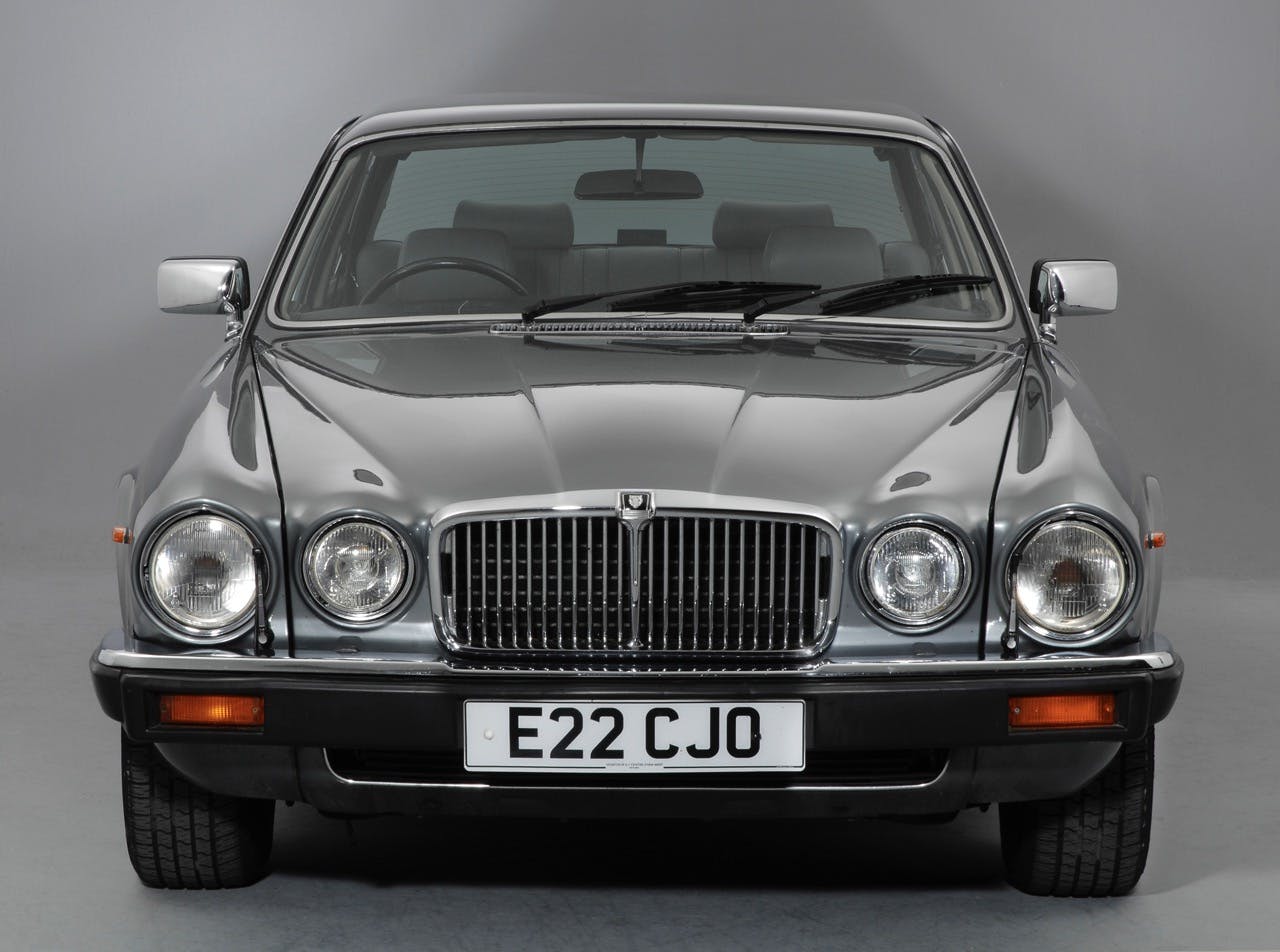
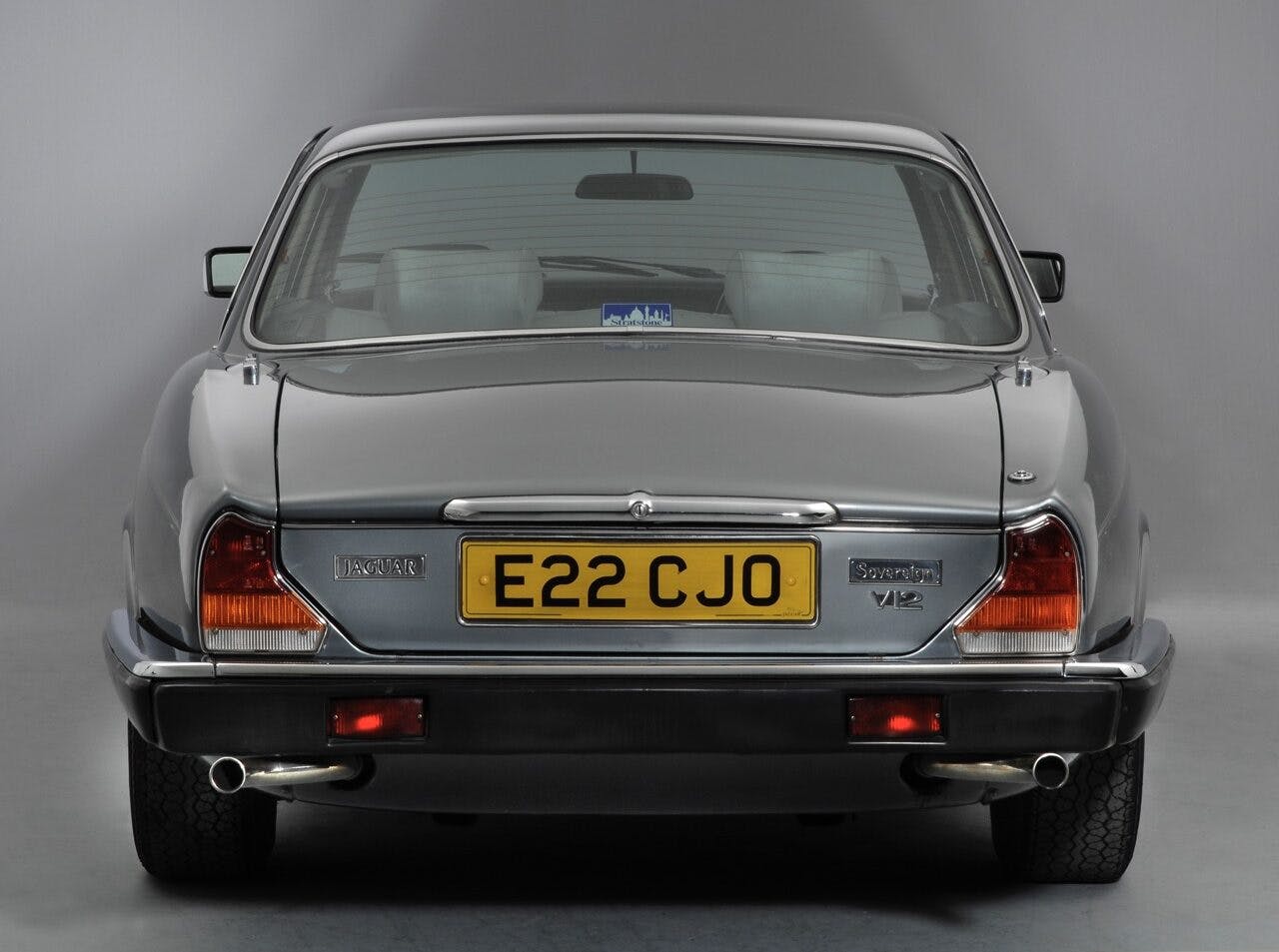
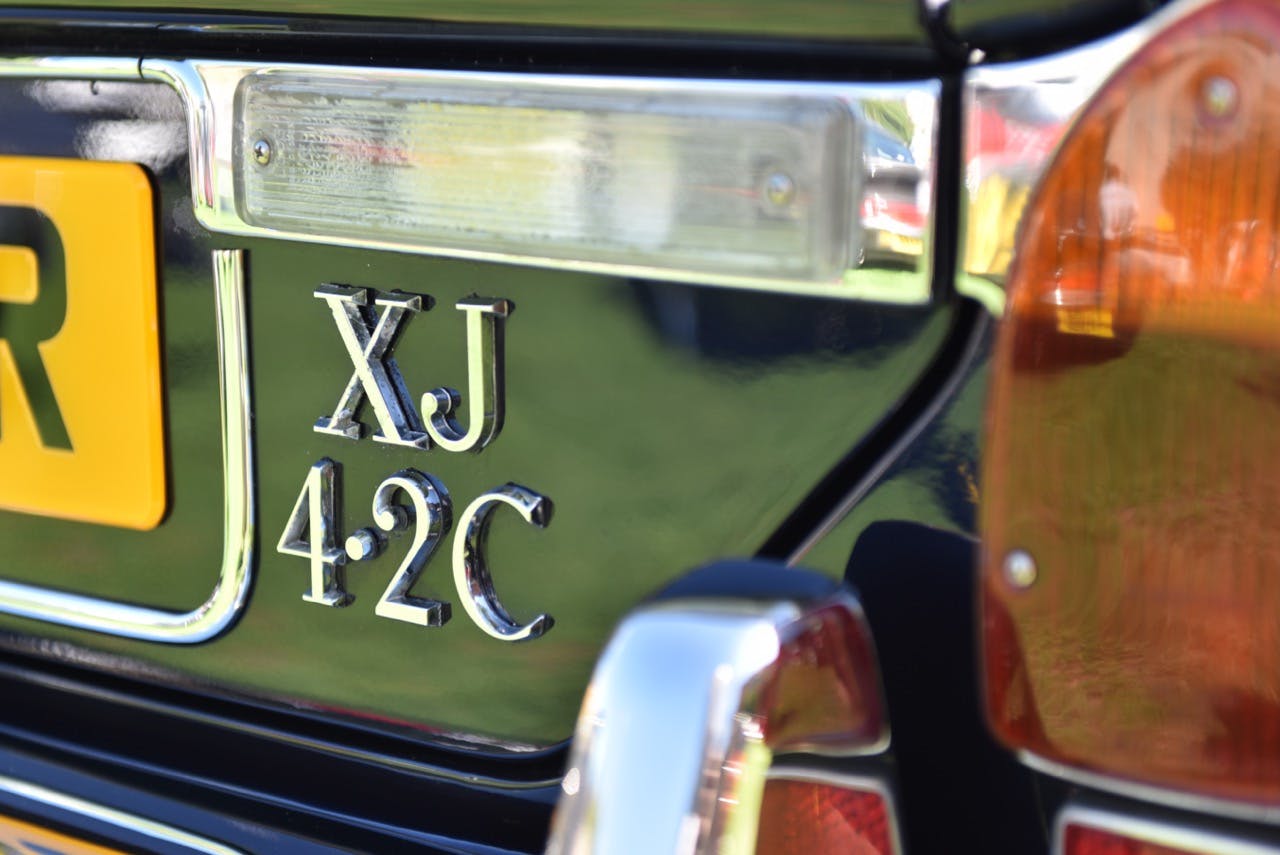
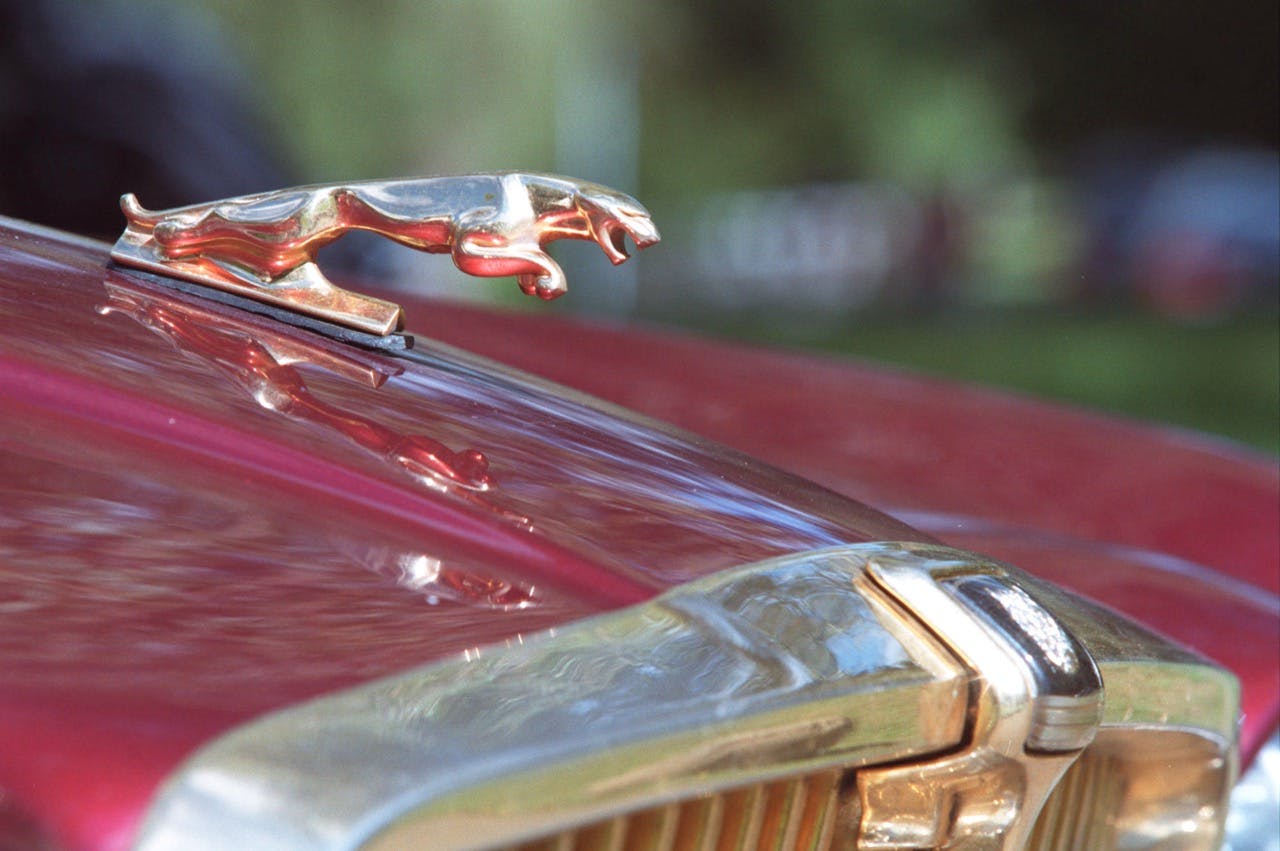
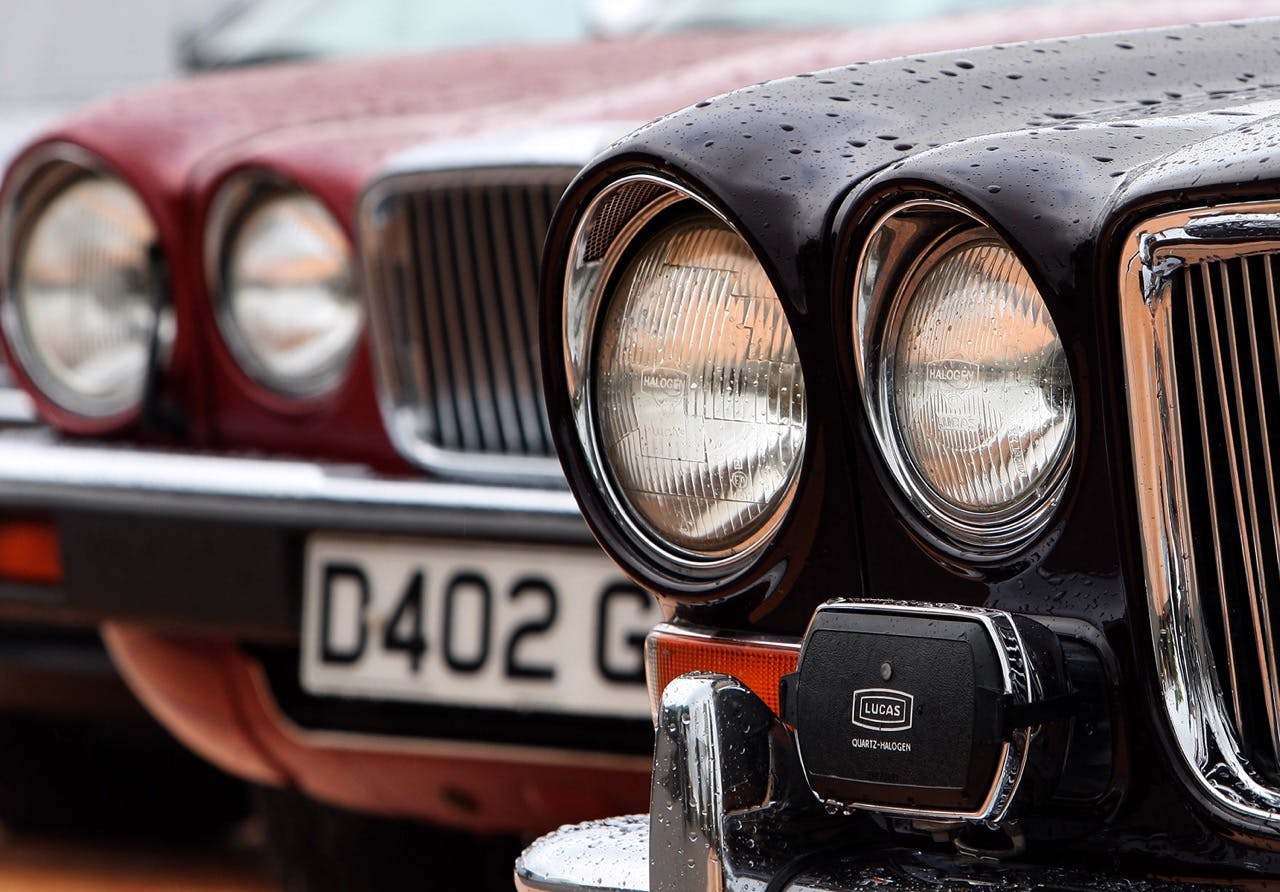
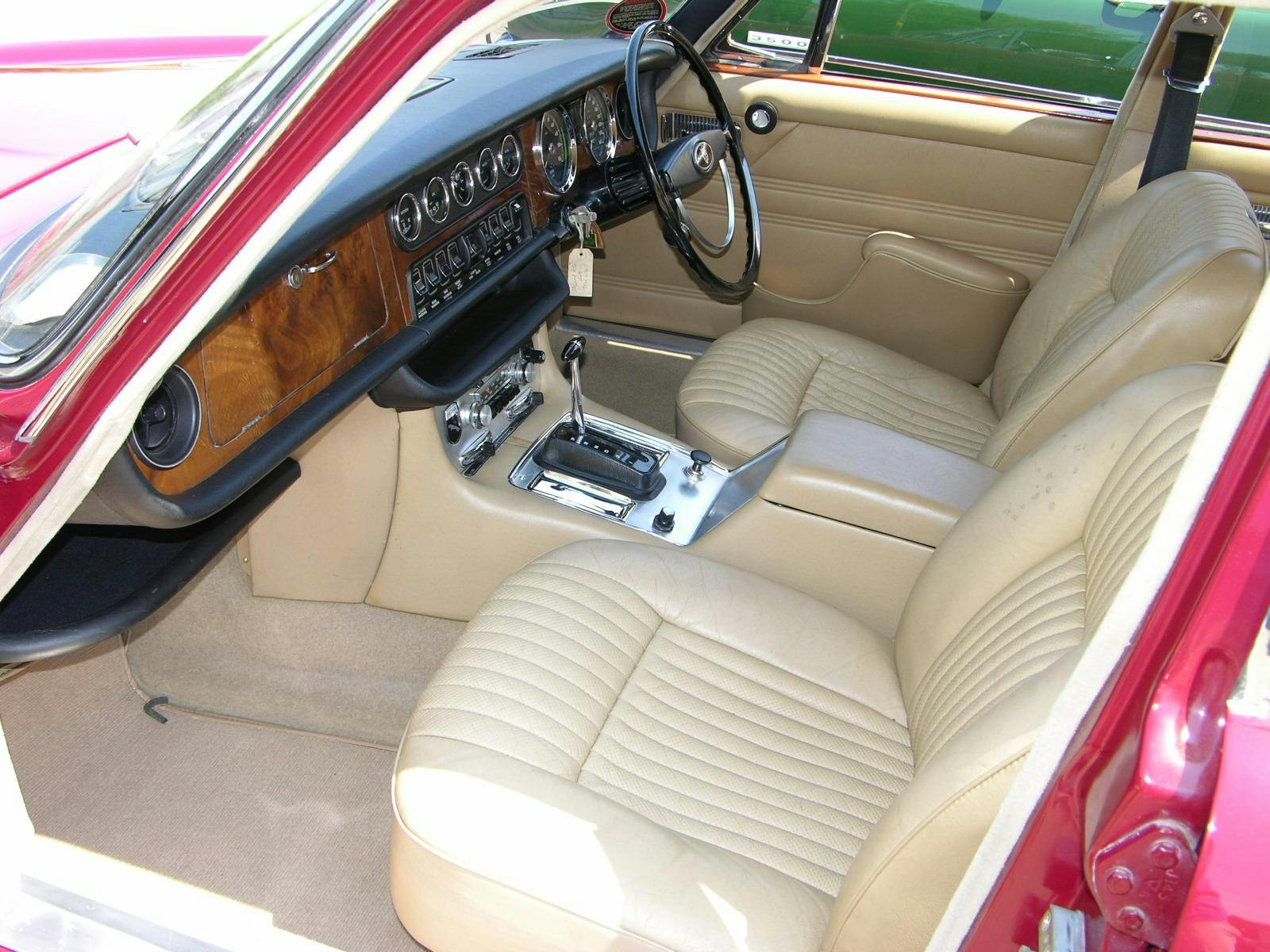
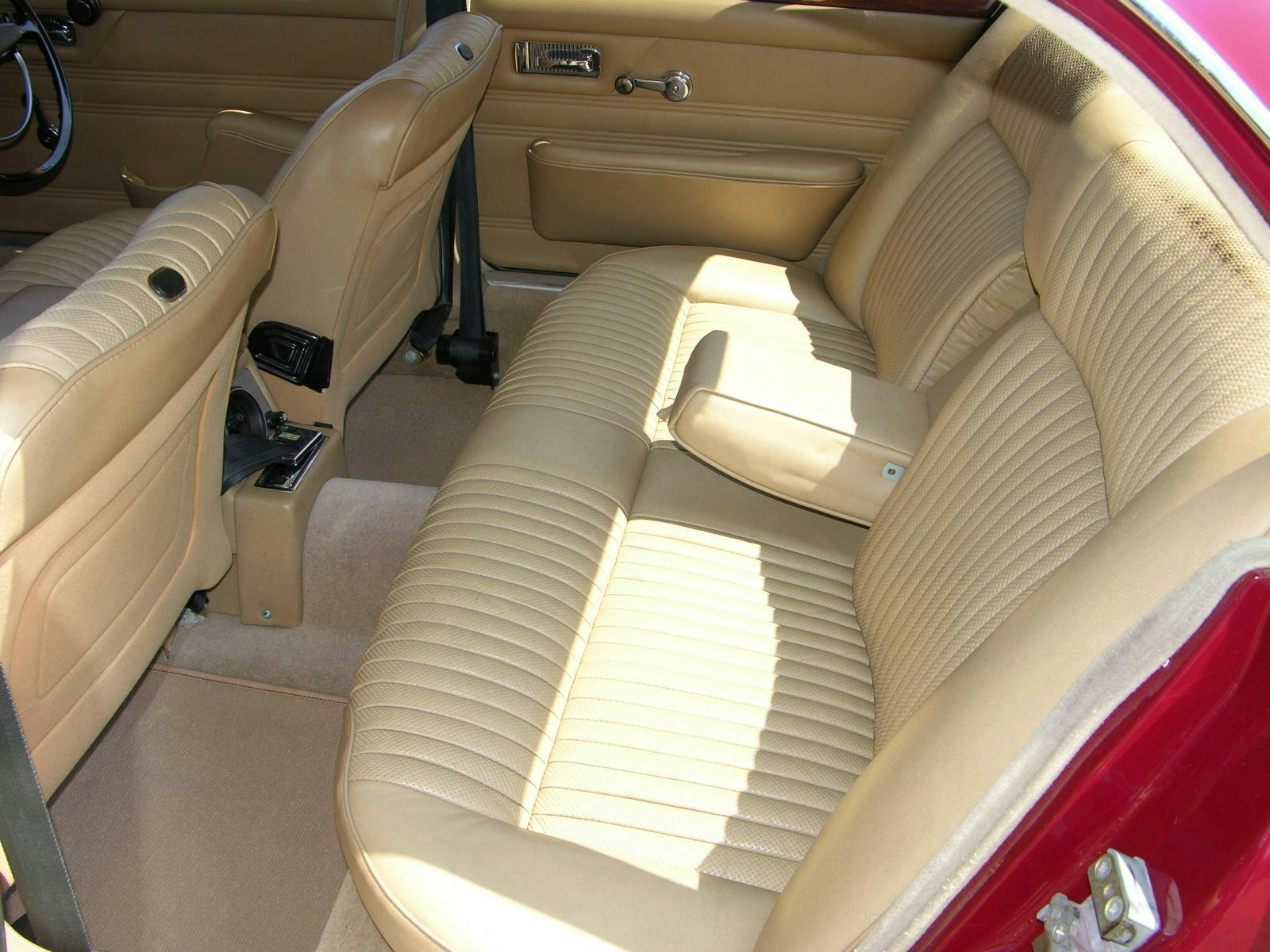














I think that XJ6-C is Ian’s
Despite what the captions say, those are both V12 engines in the two pictures of the engine bays.
Sorry but Jaguar and Perfect should not be in the same story.
This car helped with others to continue the legacy of oil leaks, electrical failures and mechanical issues.
My Buddies Father always wanted to rebuild a V12 so he bought a 76 sedan. Clean TX car with a dropped valve seat. He rebuilt the engine and got it back on the road. For a while.
The car dropped another valve seat and was experiencing computer issues on the engine. Having already spending more than it would cost to buy a new Chevy engine on parts to rebuild the 12 he made a change.
The car received a 428 Pontiac. This worked well with the TH400 transmission and the GM AC system.
This was back in the early 80’s and today the car still has been trouble free on the Pontiac power. It also have more power and torque.
Lovely car other wise. The best part on the Pontiac we found a factory Air Cleaner that let the hood shut with no mods. The trouble with many engine swaps in Jag lead to really bad hood treatments.
The two-door XJC 4.2 pictures looks good.